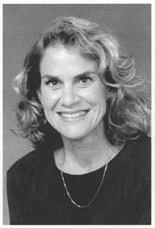ALAN v30n1 - A Note from the Editor
A Note from the Editor

In early August, a group of teachers, staff members, and a smattering of students gathered in the media center of the School for Applied Individualized Learning (SAIL) in Tallahassee, Florida. Their reason for meeting was to discuss Word Up! , the school-wide sustained silent reading program. Initiated by the enthusiastic media specialist, with consent from the faculty and staff, the program is a school-wide effort to help high school students connect with books. Several teachers voiced concerns that, while students were willing to thumb through newspapers or dabble in magazines, many showed no interest in sticking with a book until they finished it. The group wanted to help those students learn what it means to enjoy a book, to get lost in it, to come to Word Up! Sessions eager to pick up a story at the point where they had to leave it the previous day. The teachers, staff, and students wanted everyone in the school to become people who read — and who like it.
The meeting at SAIL was similar to ones that many of you have participated in this fall, I suspect. We are all interested in bringing books and teen readers together, in helping teens find books that speak to them, about them, for them. That day, the SAIL group focused its attention on the needs of the unskilled readers at the school. They decided to promote reading in this inventive way: Each time low-skills readers finish an entire book, they write a one-page summary and critique of the book (using the Clip and File section of The ALAN Review as a model). They take the summary/critique with them to a book chat with their teacher. Following the chat, the teacher gives them a coupon, good for the purchase of a new paperback book. On their own time or during school lunch, they go to a local bookstore and, with coupon in hand, find a book that they think their classmates will enjoy. They use the coupon to purchase the book, and when they return to school, they donate that book to the school's media center. When the book is donated, a card that names the donor is permanently pasted into its cover. The beauty of this strategy is that students who have not been book people, previously, are now involved in reading, critiquing, selecting, and donating books for a collection to which their friends have access. They become people who read — and like it.
How many adolescents in the school and media centers where you work will have opportunities to become people who read—and like it—this year? In the pages of this issue, you will find attention to a wide range of multicultural and multidimensional issues that have the power to grab and hold adolescent readers' attention. Perhaps these pages will give you some ideas about connecting your students with books that will appeal to them. Author Victoria Hanley leads us to consider the definitions of "creativity." Author Alex Sanchez, in an interview with Toby Emert, speaks out about writing a book that features gay high school students. These authors set the tone for a series of thought-provoking articles. Cynthia Miller Coffel discusses books that portray, and often stereotype, pregnant teens. Sherry York examines books that depict the experiences of migrant field workers. Jacqueline Glasgow considers the power of memory to reconcile images and events related to Japanese internment camps. Kathy N. Headley raises questions regarding the rights of White writers to create African American protagonists. Myrna Dee Marler focuses on poverty, as presented in three popular YA novels. Each of these pieces encourages us to think about the world from the perspective of "other," and each nudges us toward reconsidering how we define and situate ourselves within our world, too.
Gretchen Schwarz opens the sometimes jarring pages of graphic books for us. Terry and Valarie Jensen recount the success they found when they incorporated short story collections during sustained silent reading. In the Research Connection , Sherron Killingsworth Roberts challenges us to find ways to bring literary theory to the study of YA literature through her examination of female rescuers in Newbery Medal books. In the Professional Connection , Kathleen Carico points us toward memorable YA books and articles that discuss them. M. Jerry Weiss, in the Publisher Connection , reminds us of the myriad choices we have as those who know, promote, teach, and enjoy YA books. All of these ideas are complemented by the collection of book reviews that Jeff Kaplan and his team have prepared for the Clip and File section.
Let's agree to begin this academic year with a promise to keep the "Word Up!" about good YA literature all year long. Let's find ways to let the adolescent students with whom we work experience what it means to be people who read — and who like it.